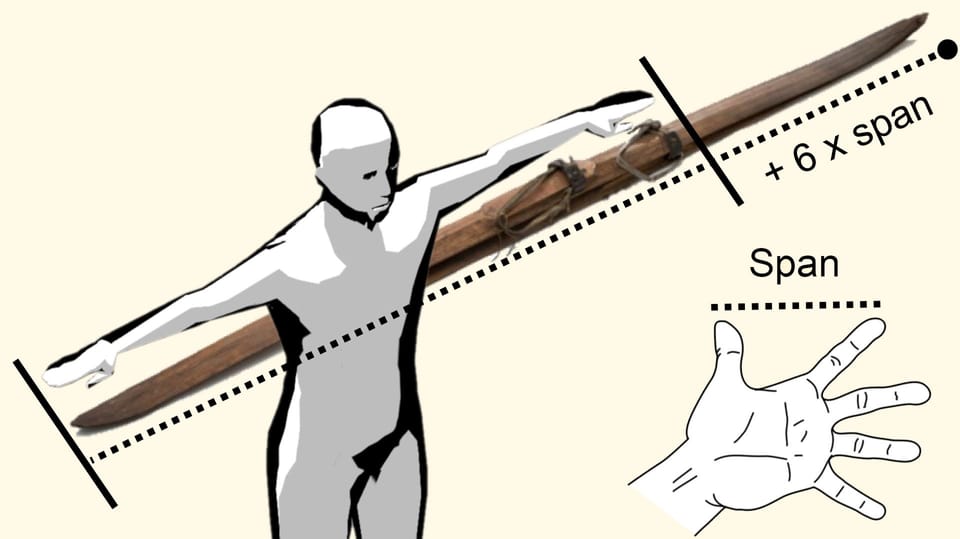With the industrial revolution, accurate measurement methods proliferated. However, more than half of cultures around the world still use body-related sizes. This is the result of a Finnish study.
Centimeters, meters and kilometers are constant quantities in our daily lives. However, in some cases, many people still turn to body-based information. “When talking to a neighbor, hardly anyone says: ‘This place is several kilometers away,’ but: ‘It’s 10 minutes away,'” says Mikael Manninen, an archaeologist at the University of Helsinki who, with two other colleagues, study written in the topic.
legend:
Mikael Maninen is an archaeologist at the University of Helsinki and co-author of the study.
Tarna Valtonen
This leads to the conclusion that at least half of all cultures around the world have units of measurement that refer to the body. The scale, arm and hand span are most commonly measured. The fact that these devices are so widespread, Manninen says, is literally obvious: “The hand is the most obvious measuring device.” It is likely that the ulna and arm would have established themselves as variations of this.
Distance index in coconut drinks
In addition to these common approaches, the research team also came across comparisons that only work in a specific context. For example in an Indian archipelago. It is customary to denote canoe distances in the form of coconut drinks: the number of coconuts is used to measure the thirst that arises on a canoe trip between two places. A phrase only locals understand and difficult to translate. External conditions such as weather are also taken into account.
A sense of thirst or an outstretched hand are variables that can lead to unequal treatment. So standard sizes appeared early in human history – such as the royal Egyptian cubit in the third millennium BC. This corresponds to about 52 cm.
Manufacturing and mass production as drivers
Standardized methods of measurement prevailed, especially in large societies. Trade with other countries or collect taxes requires unified blocs. Industrialization and the advent of mass production greatly accelerated their spread.
In previous studies, body-based systems have often been dismissed as primitive. Mikael Manninen sees it differently: Both types of measurement have advantages. Using the body as a standard, you get products that are in perfect harmony with the person. They are more expensive, but still in demand in our society – for example for tailored clothing or in sports: “When you buy new skis and ski poles in Finland, you use your height and arm span to find the right size. Even if you choose from a standardized range.”

legend:
Example of an object designed based on body-based modules: Karelian Skis, early 20th century. The sled’s length was equal to the user’s arm span, plus six hand spans.
National Museum of Finland
When equipment is specifically designed for an object, it is less likely to cause injury and ensures optimal energy transfer. These examples show that traditional metrics are still valid. And: that tailor-made clothing or individually adapted things are not modern inventions, on the contrary. What is considered a luxury today has been a standard in human history for a long time.

“Tv specialist. Friendly web geek. Food scholar. Extreme coffee junkie.”







More Stories
Record heat wave from Thailand to Vietnam
Missiles for Russia: Will Iranian aircraft be banned from flying in Europe?
Thailand raises minimum wage